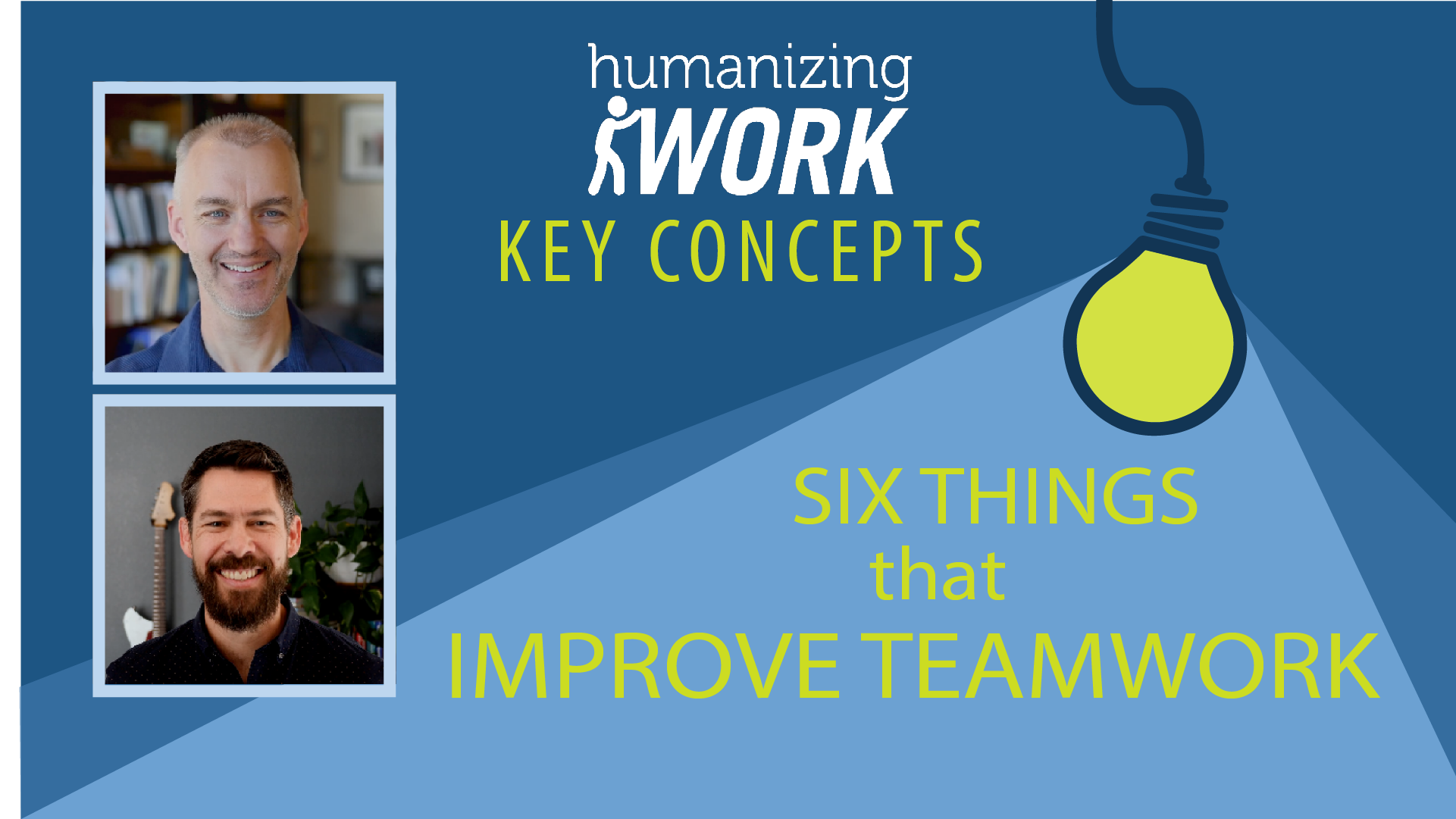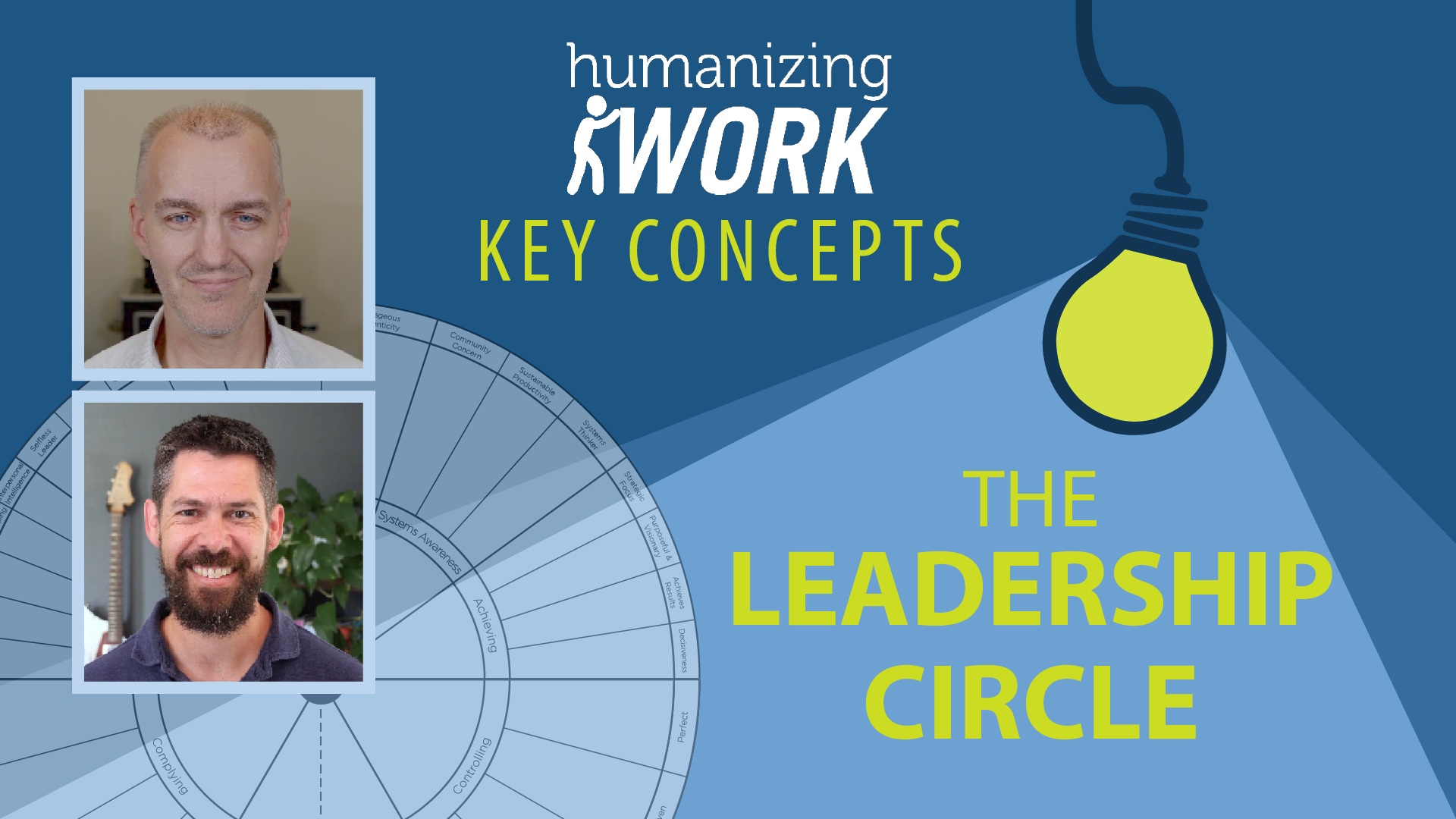If a team is underperforming, what options do you have as a leader?
During a recent Humanizing Work Community of Practice session, we discussed 3 thinking tools we’ve shared on the Humanizing Work Show that can be used to make sense of what’s going on and figure out how to respond. Think of these as three lenses through which you can look at the problem in different ways. There’s some overlap between the models, but each offers its own unique perspective and nuance.
Six Conditions
 In episode 63, “These Six Things Help Teams Improve,” we shared the 6 conditions for an effective team. You can use this model to consider whether a team is set up for success.
In episode 63, “These Six Things Help Teams Improve,” we shared the 6 conditions for an effective team. You can use this model to consider whether a team is set up for success.
- Compelling Purpose—Does the team have a clear and compelling purpose to collaborate around? Do all team members understand what it is? Is the team’s actual work aligned with that purpose?
- Right People—Does the team have the skills they need to complete the work that will achieve their compelling purpose? Or do they have dependencies on external people and teams that add delays and impediments to their work?
- Real Team—Is it clear who’s on the team and who’s not? Are team members multitasked across several teams, or are they dedicated to one team?
- Sound Structure—Are roles clear on the team? Do they have just enough process to stay focused on what matters? Do they have the tools they need to facilitate their work?
- Supportive Context—Does the team get what they need from leadership (info, clarity, funding, etc.)? Are incentives aligned for team members?
3 Jobs of Management
 In episode 56, “The Three Jobs of Management,” we introduced our model for the responsibilities of leaders in an empowered organization. This model overlaps somewhat with the six conditions for an effective team, but provides a lot more detail for supportive context, in particular. Here are some examples of questions you might consider through the 3 Jobs of Management lens:
In episode 56, “The Three Jobs of Management,” we introduced our model for the responsibilities of leaders in an empowered organization. This model overlaps somewhat with the six conditions for an effective team, but provides a lot more detail for supportive context, in particular. Here are some examples of questions you might consider through the 3 Jobs of Management lens:
- Create Clarity—Does the team know why they exist? Is it clear who the customer is? Is there alignment around a shared definition of success?
- Increase Capability—Do individuals on the team have the collaboration capabilities they need to work together effectively? Do team members have the technical skills to do the job well? Are the right people on the team? Does the team have the resources they need?
- Improve the System—How the psychological safety on the team? Is it clear who’s empowered to make which decisions? Does the team have easy access to the information they need? Are compensation and career development set up well so team members are engaged and free from unnecessary economic stress?
The Leadership Circle Profile
 Finally, this week in episode 85, “Cracking the Code of Effective Leadership with the Leadership Circle,” there’s a model for assessing your own leadership effectiveness.
Finally, this week in episode 85, “Cracking the Code of Effective Leadership with the Leadership Circle,” there’s a model for assessing your own leadership effectiveness.
- How am I reacting to the apparent underperformance of this team?
- How does this situation threaten my sense of my own identity and effectiveness?
- What effect is my reaction having on others?
- Where is that particular reaction coming from?
- What leadership competencies would serve me the best in this situation?
Look at the situation through each of these three lenses, and you’ll begin to see several options for creating good outcomes with your underperforming team.
And Another Thing…
If you like the content shared here, you’ll enjoy our Humanizing Work Community sessions. Our Community Sessions now meet over Zoom every 3rd Thursday of the month from 5:00pm to 6:30pm MDT (Denver), and we’ve recently set up a Meetup group so Community members can easily view and register for upcoming events. Join our Meetup Community here.
Last updated